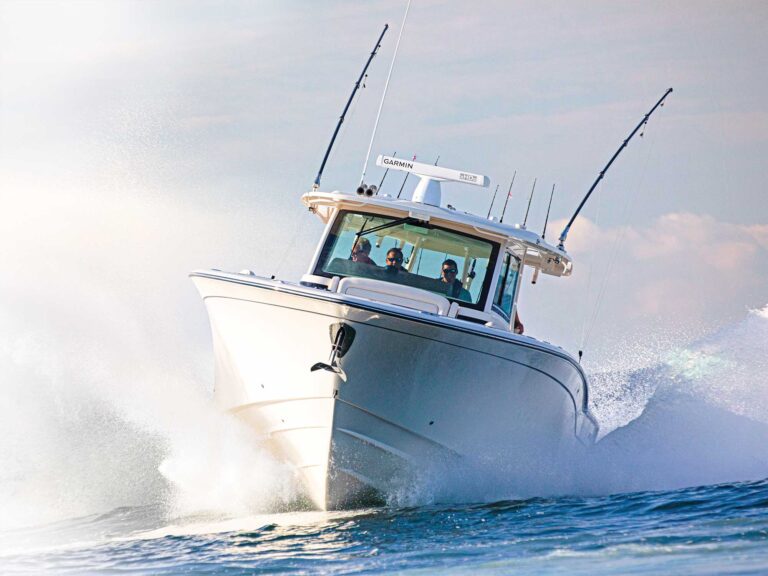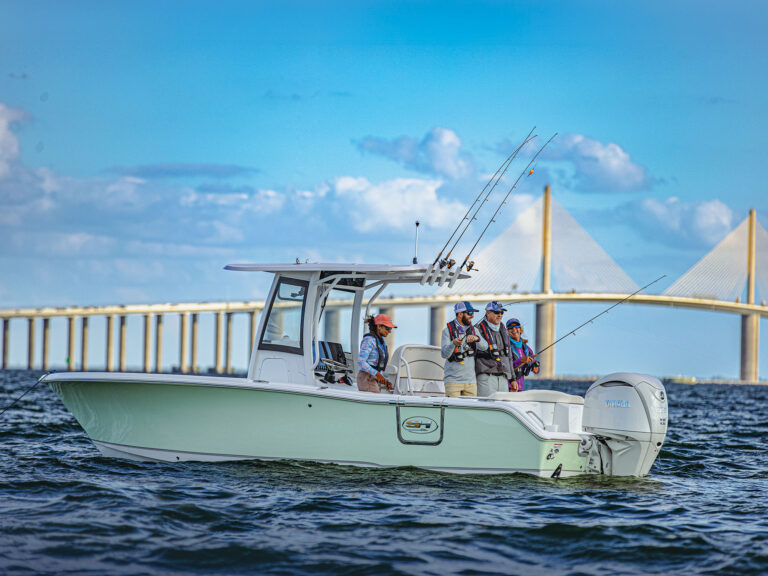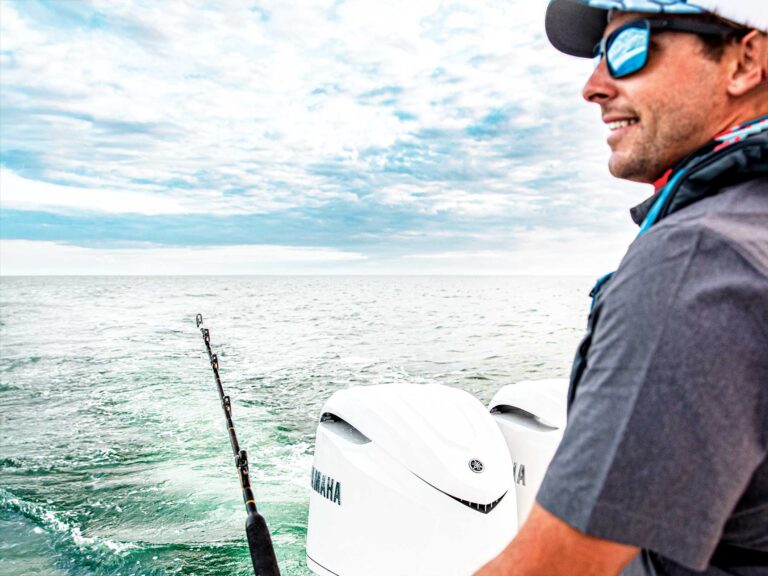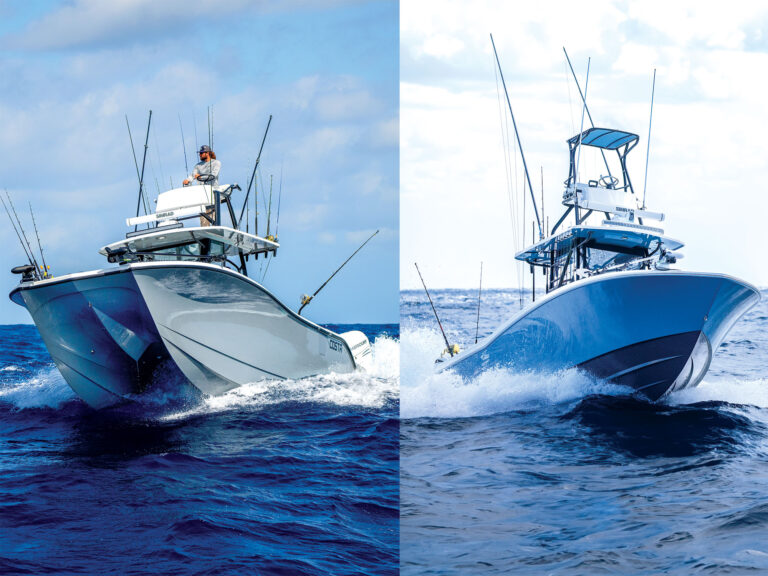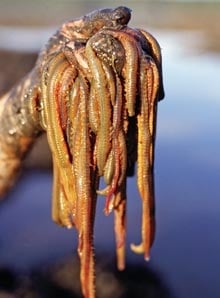
|| |—| || |GIVE ‘EM A HAND: While not the most attractive bait, marine worms catch big fish in the Northeast. Photo: Aurora/Getty Images| Worms: most fishermen start their angling pursuits with these long noodles of fish-catching wonder. But for some reason we move on or mature, and all of a sudden, the miraculous worm is cast aside in favor of a mind-blowing array of soft-plastics, flies and plugs. But why? Big fish eat worms.
Many associate the worm with bobber-fishing a farm pond for bluegill. But marine worms are a far cry from the innocuous nightcrawler used to fool panfish and trout in fresh water. These species are a specialized type of segmented worm that are perfectly adapted to live in and around the salt water mud flats that cover the eastern seaboard.
There are two main types of marine worm that anglers use: the sandworm and the more popular bloodworm. Both have specially adapted mouthparts meant for defense and capturing prey. The sandworm has two black pincers at the mouth that look like an old-style block ice carrier. The bloodworm is armed with four pincers that come out when the front of the body is agitated. Many new to fishing worms have been startled by these little adaptations. And rightfully so. Bloodworms are quick to latch onto your hand. But despite their aggressive nature, the pincers do little to protect them from anglers or gamefish that cruise the flats in search of a meal. In many instances where we’re inclined to cast fancy lures, the fish below the surface are really after worms. Using them to fool these fish is all about not over-thinking the game.
Most of the worms bought in bait stores are shipped in from Maine, the number-one sand- and bloodworm-producing state. But meeting demand is no easy chore. Each worm must be dug by hand using a pitchfork¿like tool called a worm hoe. The worms can only be dug at low water, allowing diggers to collect 100 to 500 worms per tide. From there they are kept moist and cold, and shipped all over the country.
But there seems to be a territorial dispute between the sands and the bloods. Sandworms are generally the bait of choice north of New Jersey, and bloods get the nod south. But divisions aside, they flat out catch fish. Northeast anglers use marine worms primarily to target striped bass, winter flounder and weakfish. Each has a specific technique and rig associated with it that is put into play at different times of year.
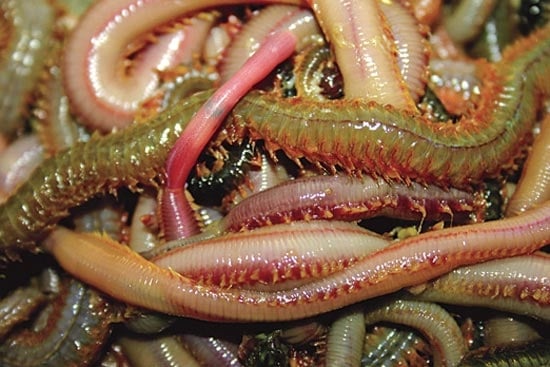
SLIME TIME: Marine worms become active on mud flats in early spring.
First Blood
At no time are marine worms used more heavily in the Northeast than during the start of the striper season. Both sands and bloods are sold in large numbers to early spring anglers trying to catch their first fish of the year. As the water is cold, forage in deeper areas is scarce. That’s when bass move onto shallow mud flats that heat more quickly due to their lack of depth, and the presence of dark mud that absorbs and retains the warmth. These heating conditions naturally stir the invertebrates of the flats into motion, drawing in the bass to take advantage of the only food in town-sand- and bloodworms.
A typical striper worm setup usually consists of a high-low rig, with small 2/0 circle hooks baited with two- to three-inch pieces of cut blood- or sandworm (see “Early Birds” on page 46). For increased success, fish them along the edge of the mud flats.
In the spring, the winter flounder are also moving onto the flats in search of worms. Catching these fish is all about chum. Seasoned flounder chasers lower lead-weighted chum pots full of crushed clams and mussels to draw the fish in, and then bait their hooks with small bits of marine worm. Tie a tandem rig with small wide-gap hooks, and slip a yellow bead onto the leader as an attractor. When the flounder are located, worm baits usually catch a limit in no time.
Marine worms are also active in the summer months. This is the time of year when the weakfish make their assault on the worms. Anglers seeking weakies will use high-low rigs tied with bait-holder hooks and a whole worm as bait. These rigs are fished close to deep-cut sod banks and in the deeper water adjacent to big flats. One technique that’s deadly on weakfish is to fish a marine worm under a bobber during the evening on outgoing tides near creek mouths.
And we’re back where we started-fishing a worm under a bobber. No matter how much we grow up, the fact remains that the forgotten worm still catches fish.
Worm Woes
Fight for your right to fish with worms.
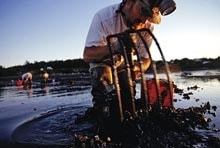
| |CAN YOU DIG IT?: With no harvest regulations in place, worm digging is becoming more difficult. Photo: Aurora/Getty Images| Supply and demand is the cornerstone of business: they have it and you want it, so you pay. But in the case of the marine worm industry, the problem lies not in the demand, but the supply. The mud flats of Maine supply 90 percent of the East Coast’s bait worms. Back in 2000, a digger could collect an average of 1,500 large worms per tide. Now in 2007, the average has dropped to a mere 150 per tide. Where did they go? Some buyers believe that unregulated harvesting is to blame. In fact, Robin Brooks, co-owner of Maine Bait (www.mainebait.com), a worm buyer and retailer, has been working hard to get some conservation measures in place.
“Right now we don’t really have any idea what happened to the population,” says Brooks. “But we need more studies to figure out what is going on, and some regulation to slow the harvest.”
Diggers currently make an average of 40 cents per worm. After harvesting, the worms are sold and shipped from the wholesaler to the retailers, who price them accordingly. So the minimum of $12 a dozen most anglers pay almost seems fair.
– D.D.





